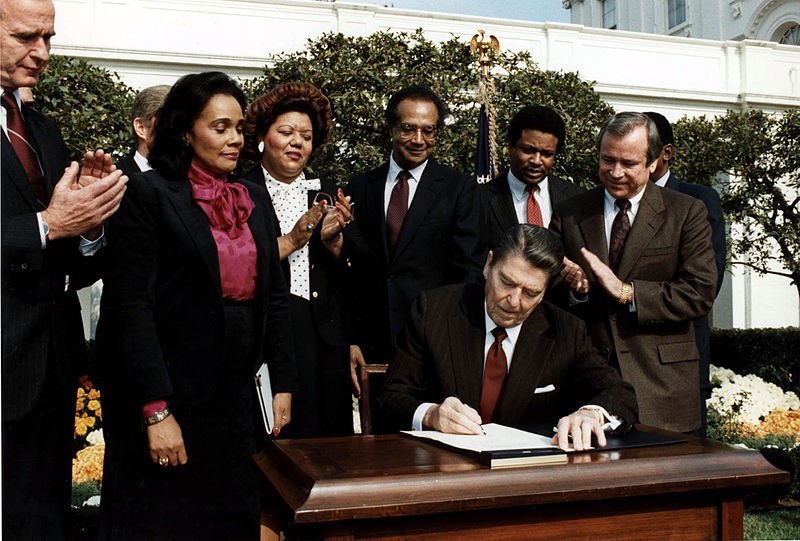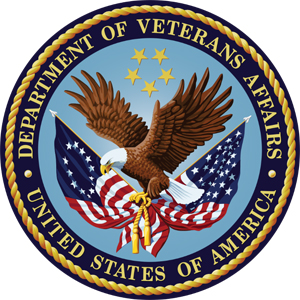Six Fun (or Frustrating) Facts about Thanksgiving and Other Federal Holidays
When it comes to federal holidays in America, most people don’t think much about them unless they’re happy for an extra day off of work. But behind the list of dates on your job benefits form are Congressional oversight, rules, compromises, and, occasionally, bitter feuds. With Veterans Day and Thanksgiving, November boasts two federal holidays; Martin Luther King, Jr. Day was also signed into law by President Ronald Reagan 25 years ago this month. In appreciation of those dates, we’re taking a look at a few things you might not know about your federal holidays.
1. There are Ten Official Federal Holidays

Federal holidays receive their designations from the U.S. Congress. Their jurisdiction includes federal institutions and their employees, and the District of Columbia; individual states and cities usually map their own observances onto the various holidays so that schools or other entities may be closed. The ten holidays by their official names are: New Year’s Day; Birthday of Martin Luther King, Jr.; Washington’s Birthday; Memorial Day; Independence Day; Labor Day; Columbus Day; Veterans Day; Thanksgiving Day; and Christmas Day.
2. MLK is the Newest Day
The most recently created federal holiday is the Birthday of Martin Luther King, Jr., commonly referred to as Martin Luther King, Jr. Day or abbreviated as MLK. The first bill to suggest the holiday went before Congress in 1979, but missed passage by five votes. The issue gained traction with the public, generating petitions and endorsements from celebrities like Stevie Wonder. Debate became incredibly contentious in the Senate; when North Carolina Senator Jesse Helms led opposition to the holiday and produced a document that he claimed contained proof of King’s association with communists, New York Senator Daniel Patrick Moynihan threw the papers on the Senate floor and stomped on them. On November 2, 1983, President Reagan signed the bill, with observances set to begin in 1986; however, some individual states resisted implementing the day as a paid holiday for years. Arizona’s resistance lost the state a chance to host Super Bowl XXVII. MLK wasn’t acknowledged as a state holiday in South Carolina until 2000.
3. It’s Still Washington’s Birthday
It’s widely believed that George Washington’s birthday was simply combined with Abraham Lincoln’s birthday to create President’s Day. Despite the name being in common use on calendars, President’s Day really only exists at state levels. The official federal name remains Washington’s Birthday; however, depending on your state, you could live a place that celebrates that, Presidents’ Day, President’s Day (note the apostrophe moved), Presidents Day (note the lack of apostrophe) or Washington’s and Lincoln’s Birthday. Colorado and Ohio call it Washington-Lincoln Day, Alabama throws in Thomas Jefferson, and Arkansas chooses to also recognize Daisy Gatson Bates, the newspaper owner and civil rights leader that advised and the aided the students known as the Little Rock Nine.
4. Columbus Day is Falling Out of Favor at the Local Level
Of the ten federal holidays, Columbus Day continues to be the one that generates the most controversy. Apart from the fact that Columbus never actually set foot in what is now the United States, much more has been learned and understood about his poor and violent treatment of the people of Central America. Though there is strong support in some quarters for keeping the holiday as is, particularly among many Italian-Americans who view it with a sense of pride, many states and cities have begun dismissing or replacing the holiday. Florida, Hawaii, Vermont, South Dakota, and Alaska not only do not recognize it, but have replaced it with Indigenous People’s Day. Iowa and Nevada don’t recognize it, but have state laws on the books to “proclaim” it; it is also not an official holiday in Oregon. As of 2017, more than 55 major American cities proclaim Indigenous People’s Day instead of Columbus Day. The United Native America group actively campaigns to drop it at the federal level.

5. Memorial Day and Veterans Day Are Not the Same Thing
The U.S. Department for Veterans Affairs, as you might expect, says it best: “ Many people confuse Memorial Day and Veterans Day. Memorial Day is a day for remembering and honoring military personnel who died in the service of their country, particularly those who died in battle or as a result of wounds sustained in battle. While those who died are also remembered, Veterans Day is the day set aside to thank and honor ALL those who served honorably in the military — in wartime or peacetime.” The placement of Veterans Day on November 11 is owed to the Armistice that ended World War I on that date in 1918; in fact, the day was called Armistice Day until a change was made by Congress in 1954. The history of Memorial Day, and its origins as Decoration Day, was covered by our Saturday Evening Post archivist Jeff Nilsson in 2009.
6. And You Thought Family Thanksgiving Could Be Contentious . . .
Almost since the founding of the United States, the government has called for national days of prayer or the giving of thanks. Obviously, this tradition goes back to the pilgrims, but actual government recognition started with a proclamation from George Washington in 1789; he designated a Thanksgiving Day for the 26th of November. For decades after, Thanksgiving Days were declared off and on, with state and territorial governors making declarations as well. In 1863, in the midst of the Civil War, Lincoln declared another national Thanksgiving Day, fixing it on the last Thursday of November.
That day held for the most part until 1939. Then, President Franklin D. Roosevelt, upon advice from department store

magnate Fred Lazarus Jr, decided to take advantage of a five-week November and designate Thanksgiving as the next-to-last Thursday of the month. The idea was to promote more shopping and commerce to help combat the lingering effects of the Great Depression. Prior to that time, it was considered unseemly to promote holiday shopping before Thanksgiving, and this would give both shoppers and businesses an extra week. Republicans in Congress objected, and discontent broke across state lines, with 23 states acknowledging Roosevelt’s date and 22 sticking to the last Thursday; Texas decided to take both days off. After two more years of disagreement, both houses of Congress passed a joint resolution that made Thanksgiving the fourth Thursday of November; that meant that in some years it would be the last Thursday, and other years it would be next-to-last, depending on how the calendar fell. FDR signed the bill on December 26th, 1941, enshrining Thanksgiving Day as an official federal holiday.